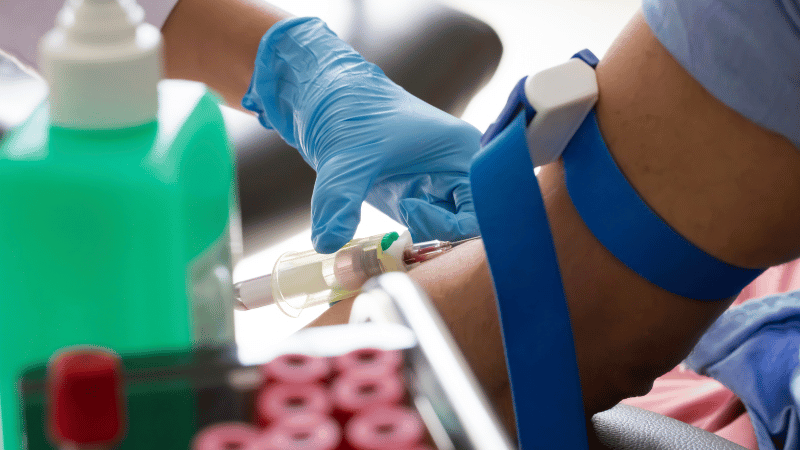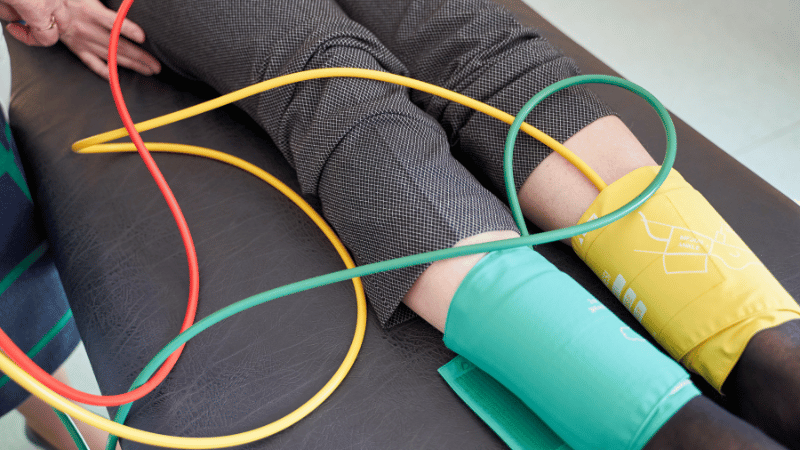Routine blood work is a preventative care lab test that identifies medical concerns. If you’re at an increased risk of peripheral artery disease (PAD), a slow and progressive disorder of the blood vessels, you might be wondering if there are peripheral artery disease blood tests that detect this vascular condition. While blood work can identify PAD risk factors, such as atherosclerosis and plaque buildup inside the artery wall, it can’t be used to provide an accurate diagnosis.
Learn why blood tests can’t detect PAD and why alternative diagnostic methods, such as seeing a vascular specialist, are important for this condition.
Is There a Blood Test for Peripheral Artery Disease?
Blood tests are minimally invasive, low-risk lab tests that diagnose diseases, monitor chronic conditions, and identify deficiencies. PAD is a serious health condition that can impact the flow of blood, oxygen, and nutrients in the arteries. However, standard blood tests can not be used to diagnose PAD on their own.
There is no specific blood test for peripheral artery disease; however, there are common blood tests that can help doctors predict if you are at an increased risk. This includes:
- Cholesterol: High cholesterol can cause plaque buildup in the arteries. If you have elevated cholesterol levels, a vascular doctor may recommend additional tests, such as an ankle-brachial index (ABI) exam or an angiogram.
- C-Reactive Protein (CRP): High levels of CRP suggest inflammation and can be a sign of other serious health conditions, such as stroke or heart attack. Individuals who are overweight, actively smoke, or don’t get enough exercise are at an increased risk of developing PAD and might have elevated levels of CRP.
- Blood Sugar Levels: High blood sugar can damage blood vessels and indicate diabetes. Diabetic patients are at a higher risk of high blood pressure, which can develop into PAD if left untreated.
Although blood tests can catch potential health risks that could lead to PAD, they cannot diagnose vascular conditions alone.
Why Blood Tests Alone Are Not Sufficient for Diagnosing PAD
Blood tests can confirm your cholesterol levels but can’t provide the information required for an accurate PAD diagnosis. For example, blood tests can’t measure blood flow or detect blockages. A vascular screening is needed to identify blockages causing the decrease in blood flow.
Blockages and changes in blood flow are typically paired with leg pain, numbness, and weakness in the lower extremities. If you’re showing any symptoms of PAD, schedule a consultation. An interventional radiologist will use advanced imaging or an ankle-brachial index to test blood flow, identify blockages, and offer an accurate diagnosis.
How Do You Test for Vascular Disease?
Your doctor can test for peripheral vascular disease (PVD), beginning with taking a medical history and a physical exam. You may also have PVD tests, such as:
- Ankle-brachial index (ABI): An ABI test will measure the blood pressure in your arm compared to that of your leg and give you a score to determine the severity of your arterial blockage.
- Ultrasound: This type of advanced medical imaging uses sound waves to measure blood flow and pinpoint blockages.
- Angiography: This advanced imaging technique involves injecting dye into the arteries. The dye helps make your arteries visible during the X-ray. The X-ray images are taken to measure blood flow and identify arterial blockages.
Treatment Options for PAD
PAD is a progressive disease that requires medical intervention. The sooner you’re diagnosed, the sooner you can get treated to avoid complications of PAD. If you’re diagnosed with PAD, vascular specialists at USA Vascular Centers will recommend non-surgical treatments that can make symptoms manageable and improve your vascular health.
The FDA-approved treatments provided at USA Vascular Clinics include:
- Angioplasty: A miniature balloon is placed into the artery and inflated, condensing the plaque against the artery wall.
- Stent Placement: After an angioplasty, a mesh stent may be placed into the artery to keep it propped open.
- Atherectomy: A catheter with a specialized tip is inserted into the artery to physically remove plaque from the body.
Contact USA Vascular Centers Today
Routine blood work is important, but diagnosing PAD with only blood tests isn’t possible. For an accurate diagnosis, you’ll need to visit a vascular specialist.
If you’ve recently gone in for a peripheral artery disease test such as an ABI, angiogram, or blood test that may suggest you have PAD, it’s important to take action. Warning signs and symptoms of arterial disease shouldn’t be ignored.
Call us at 888-773-2193 or schedule an online consultation to learn more about PAD diagnosis and treatment.




